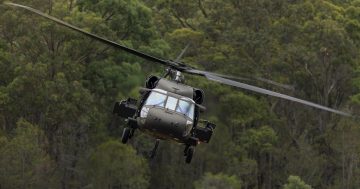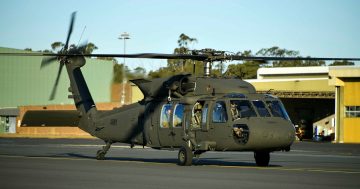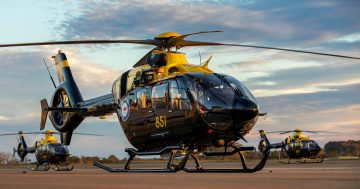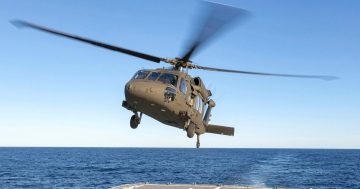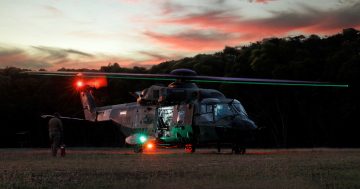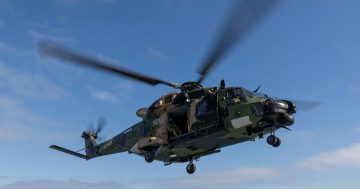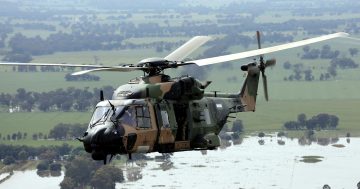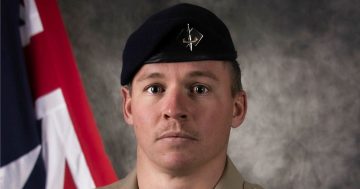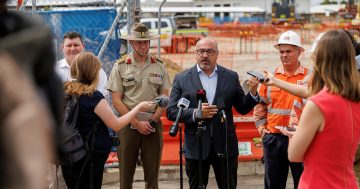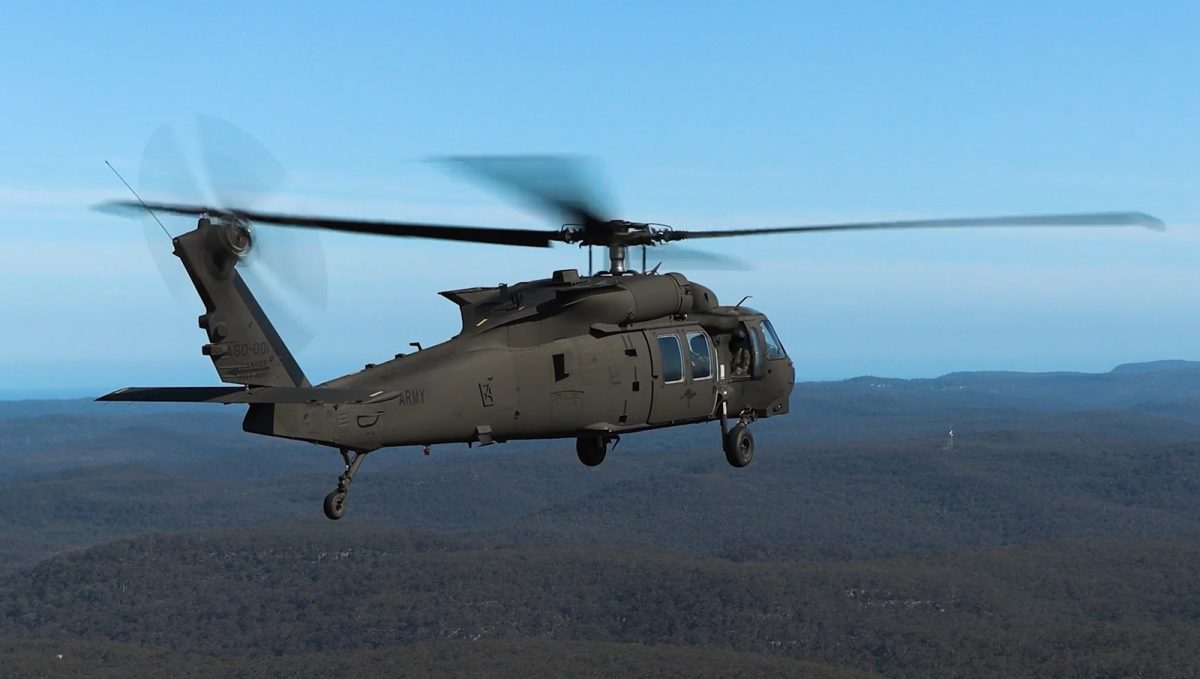
A new UH-60M Black Hawk in flight near its home base of Holsworthy in southwestern Sydney. Screenshot: ADF.
The Australian Army has invited select media to view some of its new Sikorsky UH-60M Black Hawk helicopter operations in Sydney as the fleet nears an initial operational capability (IOC).
The Army now has 10 Black Hawks in the country, with an additional two scheduled to be delivered by the end of the year. The aircraft were ordered in 2022 to replace the MRH 90 Taipan which was withdrawn from service a decade earlier than planned due to continuing poor aircraft and spare parts availability, and a subsequent grounding following a fatal crash in July 2023.
The first eight Black Hawks were delivered in a basic configuration, but subsequent airframes will have a winch on the side of the aircraft. Subsequent modifications planned for the aircraft include VHF and UHF radios, satellite communications (SATCOM), a weather radar, and a forward looking infrared sensor (FLIR).
Those aircraft not delivered with these enhancements will need to be retrofitted. A company based in Huntsville in the US state of Alabama is tasked with performing such modifications for US Army Black Hawks, but it is not clear whether this work could be conducted in Australia or if it will be necessary to return the aircraft to the US for the work.
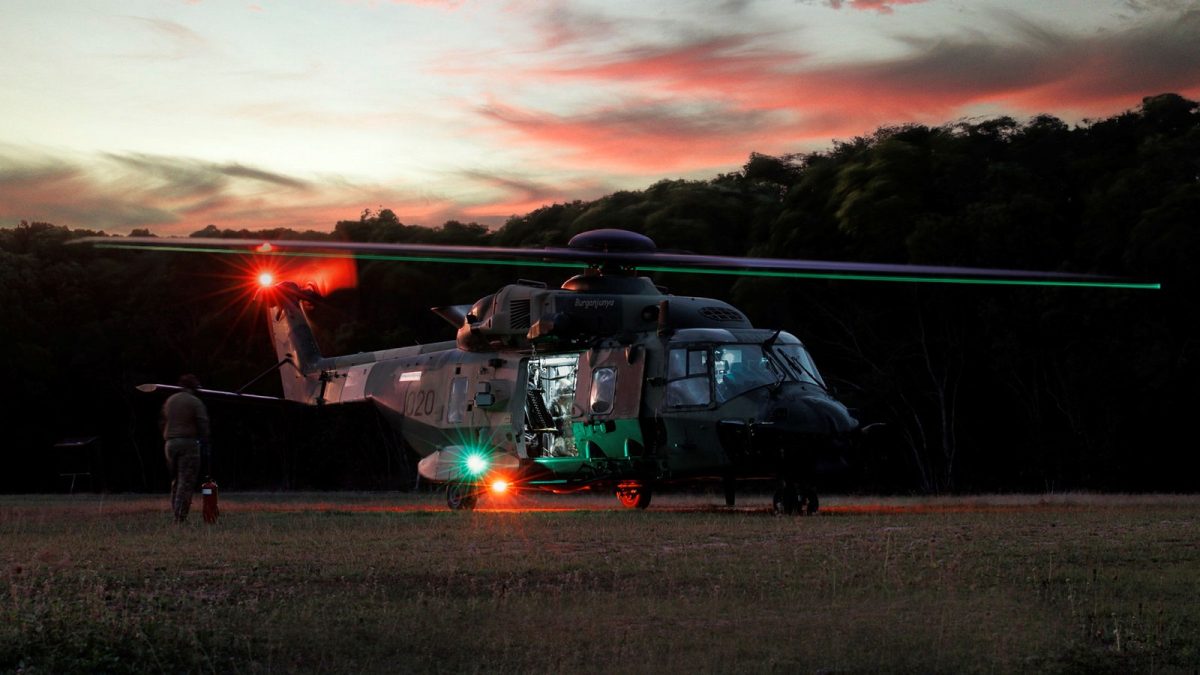
The MRH 90 fleet was grounded following a fatal crash last July and was subsequently withdrawn from service. Photo: ADF.
Sydney residents will see more Black Hawk operations in the coming weeks, with the 6th Aviation Regiment (6Avn) based at Holsworthy scheduled to conduct a special operations qualification course over the city in November. The course is aimed at training Black Hawk crews to operate at low level in an urban environment in the counter-terrorism role, and will occur in daylight and night-time hours.
The successful conduct of the course will be a key milestone to the aircraft achieving its initial operational capability likely in the first quarter of 2025.
Other training conducted to date include special operations training activities with the commandos of 2nd Battalion Royal Australian Regiment (2RAR) also based at Holsworthy, first of class flight trials from the Royal Australian Navy’s training vessel MV Sycamore, and an expansion of local maintenance activities.
Commander Army Aviation Command, Major General Stephen Jobson said this training was an important milestone for the capability.
“The Black Hawk provides Army with the modern, credible and sustainable aviation capability it needs to meet the contemporary challenges of warfare,” he said.
“This specialised, complex training will ensure our soldiers and aviators are able to rapidly respond to domestic emergencies and potential security threats.”
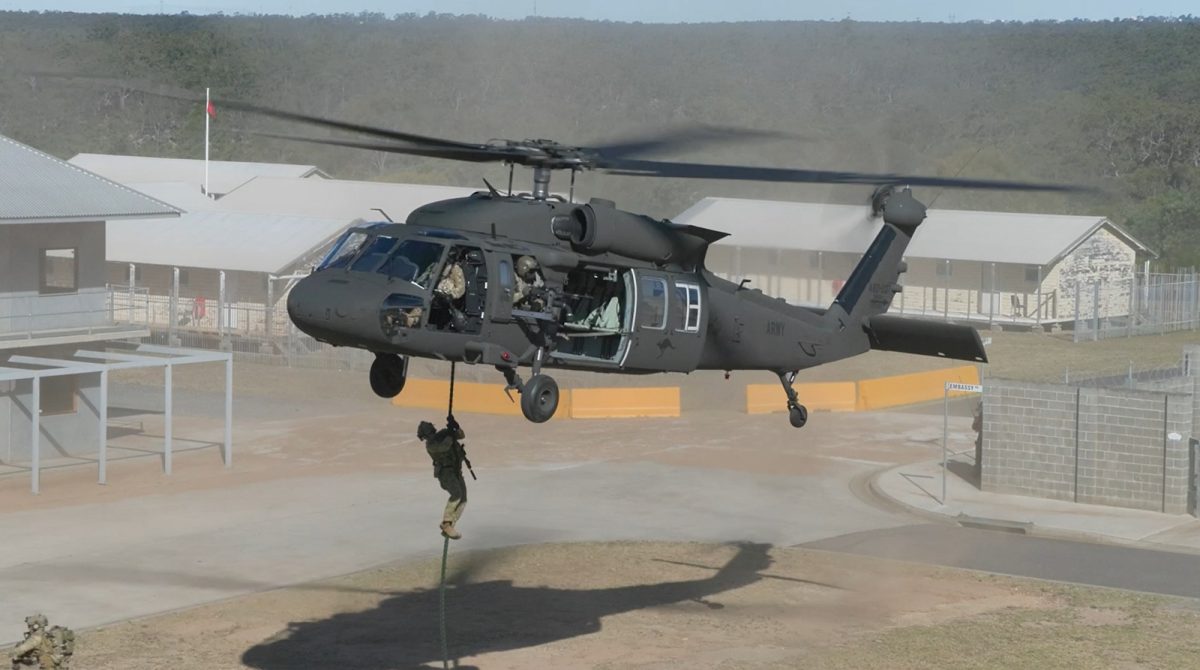
Sydney residents will see and hear an increase in Black Hawk operations in November as the 6Avn undertakes a special operations qualification course over the city. Screenshot: ADF.
The Head of Defence’s Joint Aviation Systems Division Major General Jeremy King said the introduction of the new Black Hawks was no small feat.
“In the last 14 months since September when we started operating the first three aircraft, we’ve completed more than 1400 hours,” he said. “That’s a testament to the crews and the focus on this capability. We haven’t been idle.”
MAJGEN King wouldn’t be drawn on whether the Black Hawk is more or less capable than the aircraft it is replacing.
“We’ve moved on from the Taipan and it’s about making this platform right, performing the roles and the missions that are required,” he said.
“I’m not in the business of talking comparisons. From our perspective, it’s all about getting this platform into service and making this as capable as we possibly can.”
He confirmed that, of the 46 Taipans remaining in Australian service, four tranches of components and spares had been distributed to other NH90 operators in Europe and New Zealand. He confirmed 28 of the composite airframes had now been destroyed and recycled, and that the remainder were due to be scrapped by the end of the year.


